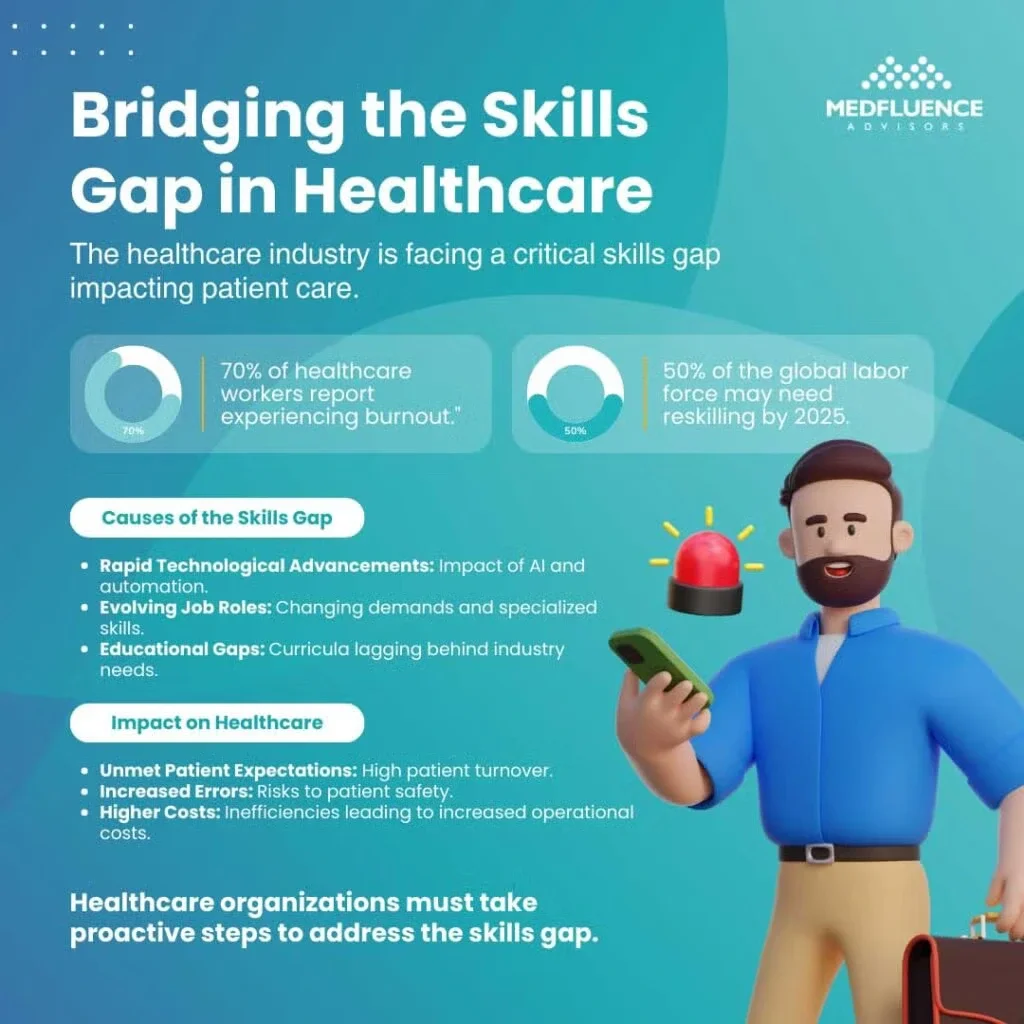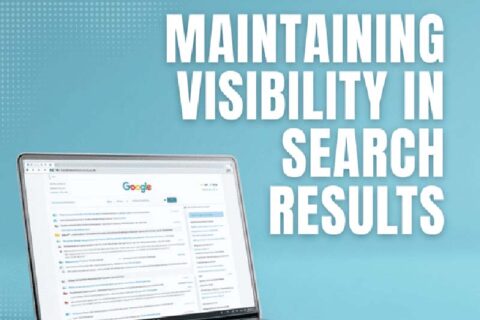Disparity in Skill and Ability in Private Practice

The healthcare landscape is constantly evolving, and the challenges facing the industry and its workforce are far from new.
Despite being one of the largest sectors in the U.S., healthcare is grappling with a critical issue: a growing skills gap that directly affects the quality of care providers can offer and the outcomes patients experience.
Multiple factors have contributed to a wave of healthcare professionals leaving the workforce, with too few new talents stepping in to fill the gap. This widening skills shortage poses a serious threat to the quality of medical services and patient care across the industry.
In this article, we’ll delve into the root causes of the skills gap in healthcare, its impact on the industry, and explore potential solutions to address this pressing challenge.
What Is a Skills Gap?
A skills gap is a disparity between the skills and abilities of the current and available workforce and the demands of the industry in which they seek employment. The disconnect between the qualifications and actual abilities of the individuals hinders the workforce from performing the jobs effectively
The healthcare industry relies on a wide range of specialized skills from a diverse workforce, including doctors, nurses, medical technicians, pharmacists, healthcare administrators, and more. To meet the ever-evolving demands of the field, these professionals must deliver high-quality care and innovative medical solutions. However, as the demand for healthcare services grows and job requirements become more complex, a skills gap is emerging in many parts of the world.
According to a report from the World Economic Forum, half the global labor force might need major reskilling by 2025. The skills gap is a consistent issue across many industries but has become a major issue in the healthcare industry because patient care, patient safety, and public wellness are at stake.
The growing skills gap in the healthcare industry presents serious challenges for employers, employees, job seekers, and patients alike. To meet patient needs and expectations, the industry must confront this issue directly and find effective solutions.
What’s Contributing to the Disparity in Skills and Abilities in Healthcare?
The healthcare industry is an evolving landscape with changes happening left and right – it’s hard to keep track of at this point. Various factors can contribute to the existing issue of disparity in skills and abilities in the healthcare industry. Here are some of the common factors contributing to this challenge:
- Rapid technological advancements
We are living in an increasingly digital world and the healthcare industry is also experiencing digitization. Technological advancements are rolling out at a rapid pace and this is reshaping various industries at unprecedented rates.
Emerging technologies like AI (artificial intelligence), ML (machine learning), and automation are changing the way things work. They revolutionize and streamline workflows that require new skill sets from the workforce.
As new technologies continue to reshape industries, including healthcare, both current and aspiring healthcare professionals often face a skills gap, making it challenging to keep pace with these significant advancements. - Evolution of job roles, requirements, and demands
The demands and requirements for healthcare roles are constantly evolving, driven by shifting market dynamics, patient expectations, and industry needs. As job roles and responsibilities change, the growing emphasis on specialized skills has led to a widening skills gap.
Certain skills are becoming more critical, while others are diminishing in importance, creating a disconnect between the existing healthcare workforce and the current demands of the industry. This misalignment threatens the ability to provide high-quality medical care, underscoring the urgency of addressing the skills gap. - Gaps in the educational and training systems
The skill set requirements in the healthcare industry are evolving rapidly, often outpacing the capacity of current educational and training systems. As a result, these programs may not adequately equip students and professionals with the skills needed to meet modern demands.
Many curricula lag behind industry advancements, leaving students and graduates underprepared for the realities of today’s healthcare workplace. This gap between education and industry needs contributes to the growing skills gap, as training systems struggle to keep pace with the demands of the evolving healthcare field. - The lasting effects of the pandemic
It’s clear that the healthcare industry was deeply impacted by the onset of the COVID-19 pandemic, and its lasting effects are still felt today.
The pandemic exacerbated workforce shortages just as demand for healthcare workers surged. Fear of exposure, coupled with increased burnout and emotional strain, discouraged many from pursuing healthcare careers. As a result, interest in joining the field has declined.
For those already in the workforce, the strain of filling these gaps has made it difficult to find the time or resources to upskill and adapt to the evolving demands of their roles. - Retirement and aging workforce
The healthcare industry is currently facing a huge decrease in its workforce as more experienced workers choose to retire. This leaves younger generations of the workforce to provide medical care to patients. Even with senior-to-junior training and the transfer of institutional knowledge to younger employees, there could still be skill gaps.
As the younger generations of healthcare workers possess different skill sets and knowledge, there will be a need for training and skill development adjustments. - A lack of interest among younger generations
Lastly, there is a considerable lack of interest among younger generations to go into various healthcare professions. The younger generations of professionals are also drawn towards higher-paying industries.
This shift could create a huge gap between the older generations of healthcare workers and the future younger generations. This leads to a larger skills gap that could be harder to address as more workers retire and fewer workers come in to replace them.

How the Skills Gap Impacts the Healthcare Industry
The skills gap issue impacts the healthcare industry in various and major ways:
- Unmet patient expectations and low satisfaction rates
A skills gap issue in the healthcare industry means healthcare workers lack the necessary skills and knowledge they need to address patient concerns and provide medical care. This results in unmet patient expectations and lower satisfaction rates on the patients’ side.
When patient expectations go unmet, they may seek alternatives and leave your practice for one they believe will better meet their needs.
- Patient safety is at risk
The healthcare industry requires a workforce with specialized skills and knowledge. When there is a disparity between these necessary skill sets and the workers’ actual skills and ability to perform their work, there is a higher risk of medical errors. Healthcare professionals deal with the patient’s health and well-being so they must not put patients at any level of risk.
Making medical errors that affect the patient’s health and well-being not only puts them at risk but will also impact patient trust. Patients losing trust in your medical practice due to medical errors will negatively impact your reputation in the industry. Word will spread about your errors and will impact your business.
- Reduced productivity
When healthcare workers lack the necessary skills and knowledge to perform their jobs well and efficiently, it often leads to reduced productivity, affecting the quality of their performance. When healthcare professionals cannot perform well due to a lack of skills, it leads to unmet patient expectations and a decrease in the quality of patient care provided.
- Increased costs
Inefficient work, poor performance levels, and the need to correct errors will often lead to increased business costs.
Healthcare employers and organizations will need to bridge and address these gaps through extensive training initiatives. Both the employers and employees will need to invest in time and resources and these will typically come with additional costs that the company will have to shoulder.
- Overworked staff and increased burnout
Current healthcare workers are left to fill the gaps caused by workforce shortages, leading to overwork and increased burnout. As a result, they struggle to find the time needed to upskill and reskill to keep pace with the evolving demands of their roles.
This creates a vicious cycle: overwork prevents them from gaining the training needed to reduce their workload, further exacerbating the strain.
Addressing and Bridging the Skills Gap in Healthcare

There’s an increasing need to address these issues and bridge the skills gap issue in the healthcare industry. Here are strategies your organization can look into and implement to grow your current and future talent pool:
- Actively implement workforce planning
First things first – actively conduct and implement workforce planning analytics. This will let you know the state of your current healthcare workforce.
Perform a skills gap analysis
Perform a skills gap analysis and identify where there are gaps in your workforce and where skills need to be improved and developed. Depending on your current workforce and the specifications of your practice, results will vary.
Identify in-demand skills and design targeted training programs
It’s not only important to identify the existing skills gap in your organization. You will also benefit from identifying in-demand skills and current healthcare trends that can help anticipate the emergence of these skills. Then, design targeted training programs that will enable your workforce to acquire these skills efficiently.
- Continuous learning and ongoing professional development
Upskilling and reskilling will equip current healthcare workers with the necessary skills and knowledge to keep up with the increasing and changing demands of their jobs and the industry. Healthcare organizations and employers must see the importance of providing continuous learning to provide better patient results and experiences.
Certifications and qualifications for specialized areas
The healthcare industry has an immediate need for specialized skills that will help workers provide quality and efficient patient care. Streamline processes for the current workforce to advance their skills and capabilities through certifications for specialized and in-demand areas. Give current workers the opportunity to get certified in specialized skills as this not only improves performance but will also open doors for career growth.
Take advantage of e-learning and online training
As we live in an increasingly digital world, take advantage of available e-learning and online courses and training. This will further promote professional development among your workforce.
Incentivize professional development
Incentivize professional development among your organization’s current workforce. Recognize and reward employees who learn new skills and gain new certifications. Additionally, open doors for opportunities and assist them in career growth so they know you’re invested in them and not just for the work they do for your practice.
- Partnerships and collaborative efforts with institutions
Foster communication and build relationships with educational institutions, the local community, businesses, and governments.
Creating opportunities
Strategic collaboration with several institutions in your community can help address the skills gap issue in the healthcare industry. These collaborations can provide opportunities for education and training that can assist in upskilling and reskilling the current workforce.
Healthcare organizations and professionals play a crucial role in shaping the healthcare education curriculum, ensuring that students acquire the essential skills and knowledge needed for success in the field. Through these collaborations, current students can gain valuable real-world experiences, enhancing their readiness for the challenges of healthcare careers.
Access to future-proof talents
Such collaborations and partnerships can also help build workforce resilience and ensure access to a pool of future-proof talents with the necessary skills and knowledge to provide quality patient care.
- Manage employee burnout
The healthcare industry is seeing a rise in employee burnout at a staggering rate of as high as 70%. Employee burnout was a problem even before the height of the COVID-19 pandemic but it was a huge factor in pushing healthcare workers to quit, causing a shortage of talent in the industry.
Use employee surveys
Healthcare organizations and employers need to know what their workers and employees feel and have to say about the work they do and the workload they take on. Leverage employee surveys to know where your employees are in terms of stress and burnout levels. Allow this to impact your workforce strategies and keep your employees happy and satisfied with what they do.
Make resources available and easily accessible
Make resources on managing work burnout available and easily accessible to your employees. Focusing on mental health and giving them access to resources for such materials will also go a long way to help them manage stress and avoid burnout at work.
Conclusion: The Skills Gap Issue in Healthcare and Bridging the Gap
The healthcare industry is an evolving landscape. Changes are inevitable but they often cause a skills gap issue where there is a disparity between the skills of the current workforce and the skills needed for the job. This gap results in poor patient results and unmet patient expectations.
Healthcare organizations must proactively take part in bridging the ongoing skills gap issue with these benefits in mind:
- Increase productivity and promote work efficiency
- Improve patient care, experiences, and outcomes
- Promote continuous professional development
- Provide opportunities for career growth
- Embrace healthcare innovation and technological advancements
Addressing these issues head-on must be a priority to get with the changing times and provide quality patient care and efficient results, a benefit your community will enjoy.


